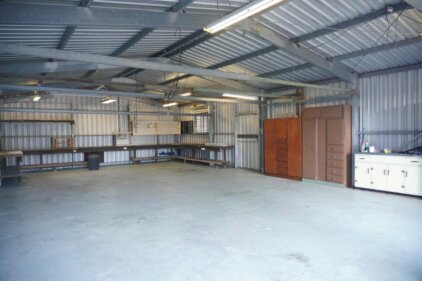Historical influences on Coastal and Rural Architecture
To truly understand the essence of coastal and rural architecture in the UK, we must first delve into its historical influences. The coastal regions of the UK have a rich maritime heritage, with a history of fishing, shipbuilding, and seafaring. This history is reflected in the architecture of these areas, with influences from coastal towns and fishing villages. On the other hand, rural architecture in the UK is deeply rooted in agricultural traditions and the close connection to the land. This can be seen in the use of locally sourced materials and the incorporation of traditional farming practices into the design of rural buildings.
Characteristics of Coastal Architecture in the UK
Coastal architecture in the UK is characterized by its proximity to the sea and the need to withstand the harsh coastal elements. One of the most distinctive features of coastal architecture is the use of materials that can withstand saltwater corrosion, such as stone and weathered wood. The design of coastal buildings also takes into account the need for protection from strong winds and storms. As a result, many coastal buildings have a low, sturdy profile with thick walls and small windows.
Examples of notable Coastal Architecture in the UK
One of the most iconic examples of coastal architecture in the UK is the picturesque town of Whitby in North Yorkshire. The town is known for its charming mix of traditional fisherman’s cottages and grand Georgian houses. Another notable example is the village of St. Ives in Cornwall, which is famous for its white-washed cottages and stunning sea views. These examples showcase the unique charm and character that coastal architecture brings to the UK’s coastal towns and villages.
Elements of Rural Architecture in the UK
Rural architecture in the UK is characterized by its simplicity, functionality, and connection to the natural landscape. The use of locally sourced materials, such as stone and thatch, is a common feature in rural buildings. These materials not only blend seamlessly with the surrounding countryside but also provide excellent insulation and durability. Another key element of rural architecture is the integration of agricultural practices into the design of buildings. Farmhouses often have attached barns and outbuildings, reflecting the close relationship between agriculture and the rural way of life.
Noteworthy examples of Rural Architecture in the UK
When it comes to notable examples of rural architecture in the UK, the Cotswolds region stands out. The Cotswolds is known for its charming villages and picturesque countryside, which are dotted with traditional stone cottages and farmhouses. The architecture in this region reflects the timeless beauty of the rural landscape and showcases the skill and craftsmanship of local builders. Another noteworthy example is the region of East Anglia, which is characterized by its traditional timber-framed buildings. These buildings are a testament to the region’s rich agricultural heritage and provide a glimpse into the past.
The harmonious blend of Coastal and Rural Architecture
While coastal and rural architecture each have their distinct characteristics, there is also a natural harmony that exists when these two styles are blended together. The combination of the ruggedness of coastal architecture with the simplicity of rural architecture creates a unique aesthetic that is both visually striking and functional. The use of natural materials, such as stone and weathered wood, can be seen in both coastal and rural designs, further enhancing the seamless blend between the two styles.
Factors to consider when blending Coastal and Rural Architecture
When blending coastal and rural architecture, several factors need to be considered to ensure a successful and harmonious design. One important factor is the location and surroundings of the building. The design should take into account the natural landscape, the local climate, and the architectural heritage of the area. Another factor to consider is the functionality of the building. The design should meet the needs of the occupants while still maintaining the aesthetic appeal of both coastal and rural architecture.
Benefits of Coastal and Rural Architecture in the UK
The blend of coastal and rural architecture in the UK offers numerous benefits. Firstly, it creates a sense of place and identity, reflecting the unique character of the coastal and rural regions. Secondly, the use of natural materials and traditional building techniques promotes sustainability and environmental consciousness. Lastly, the harmonious blend of coastal and rural architecture creates spaces that are not only visually appealing but also functional and comfortable to live in.
Conclusion: The enduring appeal of Coastal and Rural Architecture in the UK
In conclusion, the harmonious blend of coastal and rural architecture in the UK is a testament to the rich history and cultural heritage of the country. The unique combination of these two styles creates a captivating aesthetic that is both visually striking and functional. From the charming coastal towns of Whitby and St. Ives to the picturesque villages of the Cotswolds, the beauty of coastal and rural architecture is truly enduring. By blending these two styles together, we can create architectural designs that celebrate the natural landscape and provide comfortable and sustainable living spaces. So, let’s continue to explore and appreciate the harmonious blend of coastal and rural architecture in the UK.





